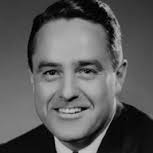The Peace Corps in the Time of Trump, Part 1
In the 56 years since the Peace Corps was launched in March 1961, the US government agency has sent more than 225,000 volunteers to 141 countries. Today, 7,213 PCVs are in 65 countries working in education, community economic development, the environment, agriculture, health and nutrition, and in youth development. Women make up 62% of volunteers serving overseas; minorities 29%. 7% of all volunteers are over the age of 50.
That said, in the minds of many Americans, the Peace Corps is lost in time, as if it, too, was assassinated on the streets of Dallas. It is not uncommon to hear even informed Americans ask, “is there still a Peace Corps?” or “Is Shriver still the Director?”
A question might be asked by this new administration: Is the Peace Corps worth the money and effort to fund and support? Trump and his people would not be the first administration (after Kennedy) to question the value of the agency. Tomorrow night, February 28, 2017, in President Trump’s first State of the Union Address, will Trump call for closing the agency so he’ll have more money to spend on the military?
A Brief History of the Peace Corps
The first two Directors: Shriver and Jack Hood Vaughn would appear to be cut from the same piece of cloth. In Fritz Fischer’s book on the Peace Corps Volunteers of the 1960s entitled, Making Them Like Us, he would write, “Perhaps unintentionally…Vaughn’s personal image connected well with the image that Shriver had created before him.”
Vaughn, however, in March 1966, when he took over as Director, said that the Peace Corps must, “skip quickly over its adolescence and become a responsible adult in a world it helped to sophisticate.”
Vaughn’s emphasis would be slightly different, but in core philosophy, he essentially agreed with the ideas of Shriver, Wofford, and Wiggins. He supported Shriver’s five-year rule. The Peace Corps would not be someone’s career. Like Shriver, he wanted, “freshness, energy, and initiative.” They were more important to Vaughn than development experience.
Vaughn did bring a new emphasis on community development, picking up one of Frank Mankiewicz’s ideas. But that, too, fit Shriver’s concept of the volunteer as a ‘new pioneer.’
Fritz Fischer sums up in Making Them Like Us, “The overarching philosophy behind the Peace Corps changed little during the 1960s. The Peace Corps leadership believed that they could send young Americans out to change the developing world for the better. Their new, anti-bureaucratic agency would represent a fresh approach to the third world. Using the values supposedly bred into all Americans, this cadre of young Americans would help the rest of the world become as successful as the United States. Kennedy’s New Frontier would allow young Americans to stretch to their full potential as young pioneers, changing both the world and the United States in the process.”
In June of 1962, a year and a half after its establishment, 2,940 Volunteers were overseas. Two years later, in June 1964, there was a total of 10,078 volunteers worldwide. 65% of them were men; 35% women. The number of PCVs continued to grow, as did support for the agency. In March of 1968, in celebration of the anniversary, President Lyndon Baines Johnson said in a letter to Congress, “If you would confirm your faith in the American future—take a look at the Peace Corps.” The Peace Corps at the time was in 57 countries.
The Peace Corps played the same song for most of the decade. In 1966 the agency reached its highest number, 15,556, and then came the 1968 election and President Richard Nixon.
End of Part 1
Key Books on the Early Peace Corps
The Peace Corps WHO, HOW, AND WHERE by Charles E. Wingenbach, A John Day Book, 1961.
The Bold Experiment: JFK’s Peace Corps by Gerard T. Rice, Notre Dame Press, 1985.
Come As You Are: The Peace Corps Story by Coates Redmon (PC/HQ 1962-67) Harcourt Brace Jovanovich, 1986.
The Peace Corps Experience: Challenge and Change 1969-1976 by P. David Searles, The University Press of Kentucky, 1997.
All You Need Is Love: The Peace Corps and the Spirit of the 1960s by Elizabeth Cobbs Hoffman, Harvard University Press, 1998.
Making Them Like Us: Peace Corps Volunteers in the 1960s by Fritz Fischer, Smithsonian Press, 1998.
Peace Corps Chronology 1961-2010 by Lawrence F. Lihosit (Honduras 1975-77) iUniverse, 2010.
When The World Calls: The Inside Story of the Peace Corps and its First Fifty Years by Stanley Meisler (PC/HQ 1964-67) Beacon, 2011.
Thanks much, John for this splendid article. Can’t wait to see part II.
John, keep the faith and energy…remember what Sarge said…”The Peace Corps is guilty of enthusiasm and a crusading spirit. But we’re not apologetic about it!”
Bob
Colombia 1964-1966
Well done, John. Look forward to continuing. Thought the draft might have something to do with increasing numbers after 1964. Sometimes marvel that Peace Corps has outlived Nixon, Reagan, and two Bushes.
Don–you are right. It was certainly the ‘draft’ that drove many young men into the Peace Corps in those days, but also the agency was ready and willing to accept BA Generalists as most of us were in the early days. Also, more than a few of the ‘early’ PCVs had already been in the army, and more would be drafted after their Peace Corps tours.
excellent idea and timing! Looking forward to more.